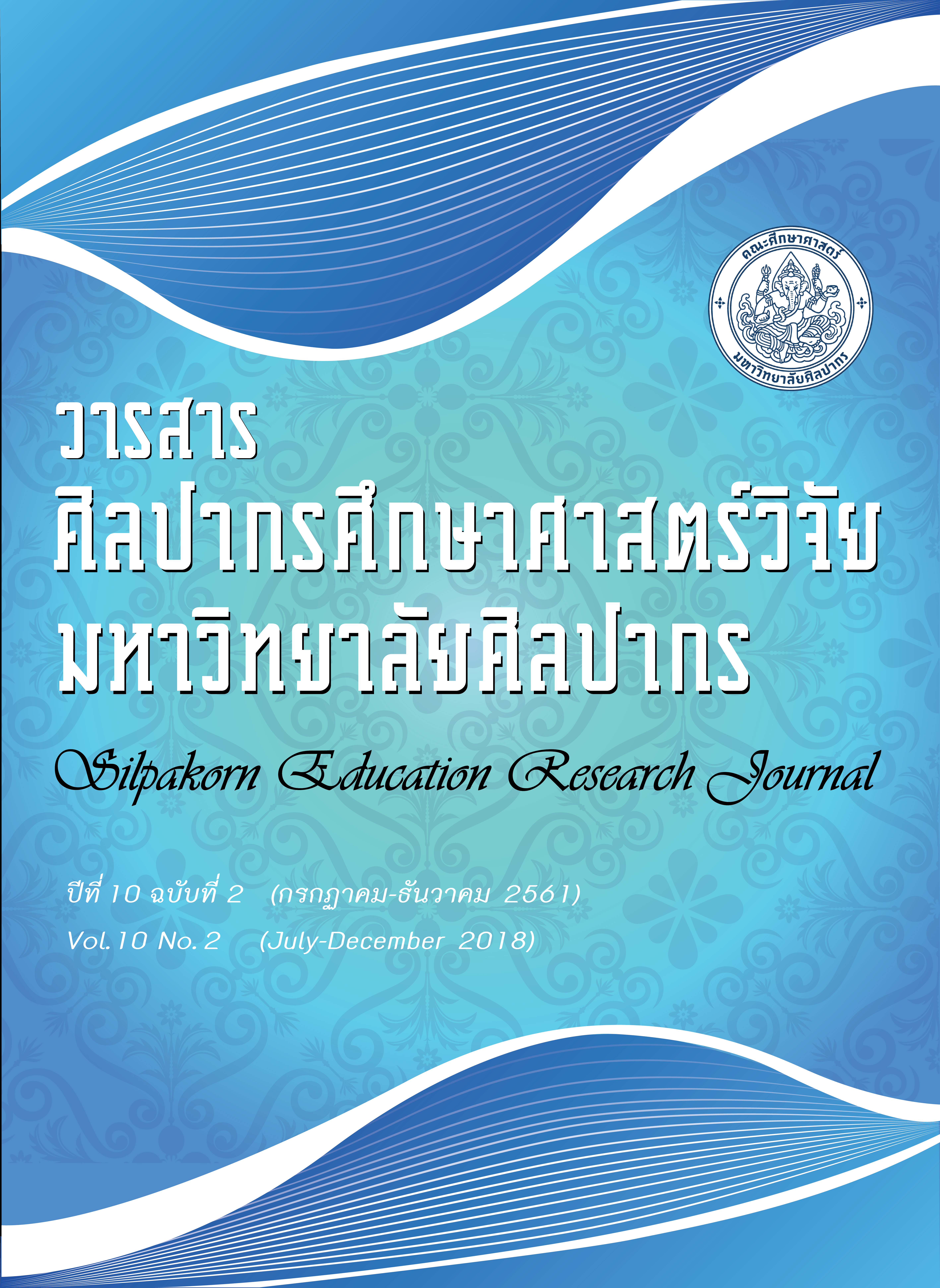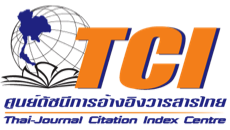แนวทางการพัฒนาทักษะชีวิตของผู้เรียนการศึกษานอกระบบ และการศึกษาตามอัธยาศัย จังหวัดนครปฐม (Guidelines for Life Skills Development of Learners in Non-Formal and Informal Education at Nakhon Pathom Province)
คำสำคัญ:
ทักษะชีวิต/การศึกษานอกระบบ Life skills/Non-Formal Educationบทคัดย่อ
บทคัดย่อ
การศึกษาครั้งนี้มีวัตถุประสงค์เพื่อ 1) ศึกษาระดับทักษะชีวิต 2) เปรียบเทียบทักษะชีวิต 3) ศึกษาปัจจัยที่มีผลต่อการพัฒนาทักษะชีวิต และ 4) ศึกษาแนวทางการพัฒนาทักษะชีวิต ตัวอย่าง
ที่ใช้ในการศึกษาครั้งนี้ได้แก่ ผู้เรียนระดับมัธยมศึกษาตอนปลาย หลักสูตรการศึกษานอกระบบ จำนวน 357 คน และผู้บริหาร ผู้นำชุมชน ครู และผู้เรียน จำนวน 17 คน เครื่องมือที่ใช้คือ แบบสอบถาม
แบบสัมภาษณ์ และสนทนากลุ่ม วิเคราะห์ข้อมูลใช้ค่าร้อยละ ค่าเฉลี่ย ส่วนเบี่ยงเบนมาตรฐาน สถิติทดสอบที การวิเคราะห์ความแปรปรวน การวิเคราะห์การถดถอยพหุคูณ และการวิเคราะห์เนื้อหา
ผลการวิจัยพบว่า ทักษะชีวิตของผู้เรียนโดยรวมอยู่ในระดับมาก ผู้เรียนที่มีอาชีพและรายได้ที่แตกต่างกันจะมีทักษะชีวิตแตกต่างกัน และปัจจัยการสนับสนุนทางสังคม ลักษณะมุ่งอนาคต สัมพันธภาพในครอบครัวสภาพแวดล้อมทางการเรียน การรับสารนิเทศจากสื่อมวลชน
และสัมพันธภาพระหว่างผู้เรียนกับเพื่อนมีผลต่อการพัฒนาทักษะชีวิต สามารถทำนายการพัฒนาทักษะชีวิตร่วมกันได้ร้อยละ 70.8 โดยมีแนวทางการพัฒนาทักษะชีวิตของผู้เรียนคือ 1. สถานศึกษาหรือ กศน. อำเภอ เป็นผู้กำหนดนโยบาย และแนวทางการพัฒนาทักษะชีวิต 2. ให้ข้อมูลประกอบการตัดสินใจ 3. ให้ผู้เรียนแสวงหาความรู้จากเพื่อน 4. ยึดผู้เรียนเป็นศูนย์กลาง 5. เน้นการสร้างความเข้าใจในตัวผู้เรียน 6. เน้นการสอนเกี่ยวกับชีวิตของผู้เรียน 7. กำหนดเรื่องของสังคมเป็นกิจกรรม 8. เรียนรู้จากการเข้าค่าย 9. เน้นให้สามารถไปประกอบอาชีพ 10. เรียนรู้วิธีการอยู่ในสังคม
คำสำคัญ: ทักษะชีวิต/การศึกษานอกระบบ
Abstract
The purpose of this research were 1) to study life skills levels 2) to compare life skills 3) to study the factors those have effected to life skills development and 4) to study the guidelines of life skills development. The sample in this study were learners in secondary level of Non-Formal Education progamme at total 357 persons and administers, community leaders, teachers and learners at amount 17 persons. The instruments were used as questionnaires, interview forms and focus group. Data analysis had used percentage, mean, standard deviation, t-test statistic, one-way ANOVA, stepwise multiple regression analysis and content analysis.
The research results were found that life skills of learners in totally were at high level. Learners, who have differently in occupation and income, would have differently in life skills. Factors that have supported in social reinforcement, future orientation, family relationship, learning environment, getting information from mass media and relationship between learners with their friends those are affected to life skills development. This would forecast on common life skills development in percentage at 70.8 by having the guidelines of life skills development of learners 1) schools or non-formal district office as formulators and assign the guideline in life skills development of learners 2) give the data for decision support 3) assign learners search the knowledge from their friends 4) hold the learners as the center 5) emphasize the understanding creation to learners 6) emphasize on teaching regarding to life of learners 7) assign the learners to learn to from camping, training and interested activities by adding the using a digital media to all activities 8) learning from camping 9) emphasize on career works 10) learn the method for social living give the method with happiness and be a good person in society 10) teaching regarding to life of learners.




